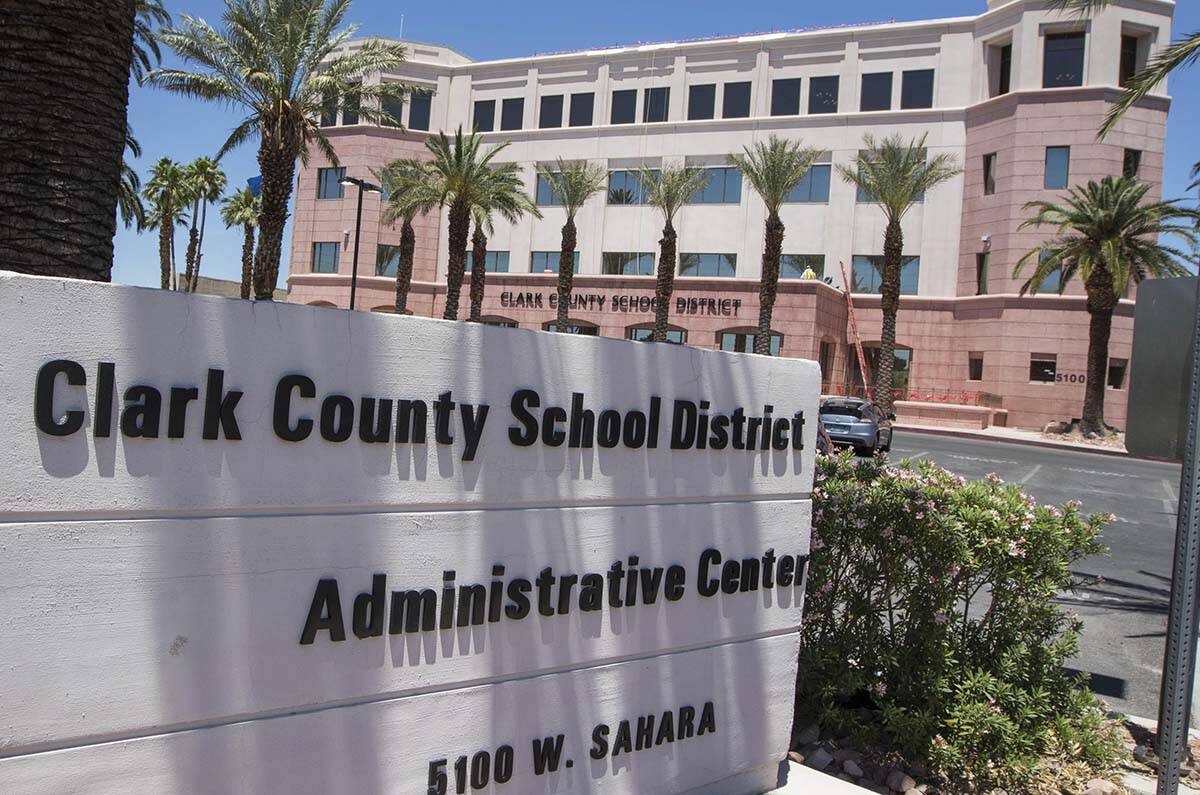School Board gets update on unpaid health insurance claims
The health insurance provider for Clark County School District educators is working to resolve issues for 44 members who were in collections because of unpaid medical claims.
Officials with THT Health provided updates Thursday to the Clark County School Board.
Of the 44 members identified as being in collections, 13 of those cases have been resolved, THT Health CEO Tom Zumtobel said.
That means a member’s health care provider was paid and the collection agency notice was retracted, he said, noting there also isn’t a blemish on their credit record.
THT is reconciling collections issues for 31 remaining members.
“We understand that it’s not acceptable that even 44 people went through this, and we’re ashamed of it,” Zumtobel said. “This was our fault, and we accept that.”
THT is the insurance provider for about 34,000 people — licensed educators and their family members — and is overseen by the Clark County Education Association teachers union.
For months, teachers have showed up at School Board meetings to express concerns about THT Health, including how their medical claims weren’t being paid and that they were being dropped as patients by providers.
The presentation of updates by THT was required as part of an agreement announced in October between the school district and teachers union.
The agreement included financial transparency and other requirements the health trust must meet, including settling past due claims and resolving employees’ medical debt by certain deadlines.
The district provided a $35 million advance to the health trust in May, which must be repaid by June 30, 2024.
The health trust launched a communications campaign in November to find educators who were put into collections or threatened with that because of “THT not paying our bills timely,” Zumtobel said.
Through that, 877 educators identified themselves via email as having collection concerns, he said. Once duplicate entries were identified, THT reached out to all 847 people and contacted their providers.
The number of members who were in collections, 44, hasn’t increased recently, Zumtobel said, but the trust wants to know if anyone else is affected and will fix it.
He said he has a high degree of confidence that no additional educators will be put into collections.
Litigation ongoing
Zumtobel said that he’s pleased with the progress the health trust has made with addressing collections issues and that problems happened on a small scale.
He said he believes the small scale is because of local physicians respecting local educators. If it weren’t for that, there would have been bigger issues because THT was at fault, he added.
Of the $5 million the school district allocated for collections reconciliation, $113,000 was used for the 13 members whose collection status has been resolved.
The health trust has used $412,000 to pay providers where members were threatened with being sent to collections, and $129,000 is allocated for 31 members whose collections negotiations are in progress.
And $1.6 million is for two large providers who threatened to send the practice to collections or to pursue litigation, Zumtobel said, noting that is money THT already owed them.
There was one different provider before the communications campaign who aggressively turned over all educators to collections, he said.
Now, all of those claims have been paid and collections notices were retracted, Zumtobel said. THT is still in litigation with the provider, who is no longer in network, he said.
THT Health had $55 million in unpaid claims in June. Now, it has about $35 million, Zumtobel said, calling it “really tremendous progress.”
Of the amount remaining, 65 percent involves two large providers, he said, noting THT is far along in those talks.
A few trustees told health trust officials they made great progress.
Trustee Danielle Ford told them she appreciates their transparency and willingness to own the situation, not hide from it and not give excuses. She said that helps her have faith in the health trust going forward.
Chronic absenteeism
The board heard presentations about three areas within the district’s Focus: 2024 strategic plan — chronic absenteeism, graduation rates and middle school geometry and algebra enrollment.
The district’s chronic absenteeism rate — how many students are absent for 10 percent or more of enrolled school days — is 37.1 percent this school year. That’s much higher than the district’s 16.9 percent target under the strategic plan.
“Frankly, we didn’t meet our targets,” Assistant Superintendent John Anzalone said.
The definition of chronic absenteeism is established by the U.S. Department of Education, and includes both excused and unexcused absences, said Mike Barton, chief college, career, equity, and school choice officer.
The last time the board heard an update about chronic absenteeism was in 2019, prior to the COVID-19 pandemic, Barton said.
The district was on a trajectory of improved chronic absenteeism rates before the pandemic, he said, with a rate of 18.4 percent during the 2019-20 school year.
The context has changed, Barton said, noting students are told to stay home if they have COVID-19 symptoms, have tested positive or are in quarantine.
Also, the school district operated under 100 percent distance learning for about a year beginning in March 2020 before bringing students back for at least some in-person classes in spring 2021, which affected attendance reporting. Schools are operating with full-time in-person classes this school year.
The district’s chronic absenteeism rate this school year ranges from 19 percent among Asian American students to 46.5 percent among Black students.
The 27.5 percent gap between those student groups is significantly higher than the strategic plan goal of 9.3 percent.
District officials shared a comparison with other large school districts, but said some districts didn’t report data during certain pandemic school years while the Clark County School District did.
The district’s chronic absenteeism rate of 33.9 percent last school year was higher than the Denver, Los Angeles, Miami-Dade County and San Diego school districts, according to meeting materials.
Trustee Evelyn Garcia Morales said she appreciated public comments about the agenda item that chronic absenteeism is a community issue fueled by poverty.
She said that in her experience, she has encountered students who are chronically absent for a variety of reasons, including high schoolers needing to step out of class to take their younger siblings to school because their parents are working.
It signals a need for affordable child care, Garcia Morales said, noting “our families have needs.”























